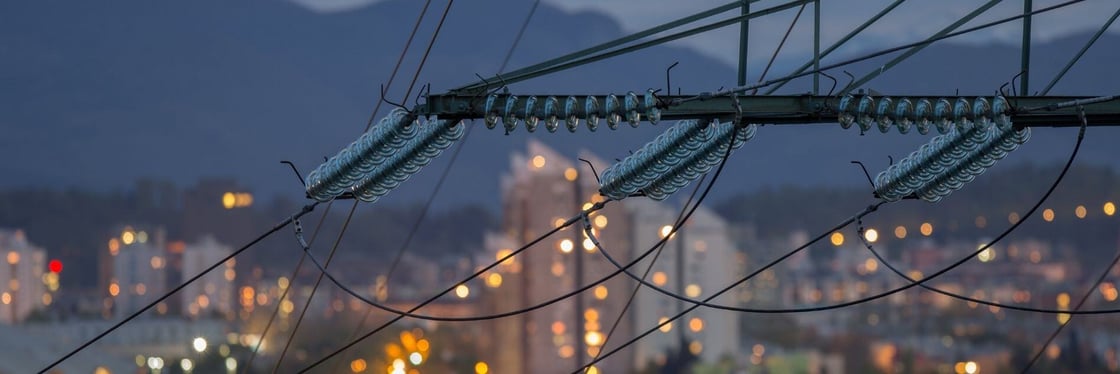Can negative prices be positive for the energy transition?
Technology for generating renewable electricity is revolutionizing the energy industry as countries all around the globe are putting climate action policies into effect. But for the foreseeable future, both renewables and conventional power plants are needed to meet the ever-increasing electricity demand, keep the grid stable, and avoid blackouts. How does this hybrid setup impact prices, and why do negative prices occur? This article has the answers.
Renewables and conventionals
Weather is almost impossible to predict precisely, so relying on wind or solar energy production can lead to either a surplus or a lack of energy at certain times. Renewables have low flexibility, as their energy generation heavily depends on fluctuating environmental conditions; they cannot simply produce more energy on cue. Ensuing fluctuations in the grid must be balanced with on-demand flexibilities.
By providing crucial flexibility to energy markets that integrate increasing shares of renewables, conventionals like coal or thermal power plants can help minimize disturbances to grid frequency and play a positive role in the energy revolution. Unsurprisingly, these new market grid dynamics impact the pricing of generated energy.
Pricing with renewable energy
In a very Macroeconomics 101 sense, the price of energy is defined as the meeting point between power demand and power supply at a specific moment. In practice, a set of variables influences this balance in real-time and creates trading opportunities for participants in the wholesale energy markets.
The price in the power spot market reflects the supply-demand situation in the physical grid, which needs to be balanced to prevent power outages. The more power is consumed, the higher the price rises. This automatically incentivizes expensive generation assets (power plants) to produce that energy. If less power is needed, the price is lower.
The diagram below shows how energy prices are determined at the electricity exchange. Power producers place hourly bids with the capacities they can supply and the price they're willing to accept. At the same time, buyers submit their purchase bids. The so-called merit order then ranks the offered prices from lowest to highest, with the cheapest bids that are needed to meet the current demand setting the market-clearing price.
 Source: Clean Energy Wire
Source: Clean Energy Wire
Renewables have a significant impact on the interrelation between supply and demand these days: On the one hand, they are intermittent and cannot be “switched” on at will. As a result, conventionals and storage are required to balance the grid. This is often talked about when a lack of renewable power leads to price spikes, and the remaining conventional capacity doesn't suffice to meet the power demand.
On the other hand, once a wind or solar asset is built, the power is basically available for free, at zero marginal cost. As more and more renewable capacity gets installed, the total power generation on particularly sunny and windy days exceeds the total power consumed. While transmission system operators (TSOs) can't always immediately stop power production or activate bulk electricity consumption to keep this excess energy from destabilizing the entire grid, there is a way to deal with this situation: Letting the invisible hand of the market do its job with negative prices.
On 21 April 2020, as shown below, renewable sources met Germany's electricity demand almost completely. The result? Total electricity production in Germany overshot the demand by several hundred thousand MWh. Negative prices dealt with the surplus.
 Source: Bundesnetzagentur | SMARD
Source: Bundesnetzagentur | SMARD
Negative prices
Turning off wind and solar plants on short notice is technically feasible but often makes no economic sense due to regulations like feed-in tariffs and renewable surcharge schemes. Also, coal-fired plants can’t be stopped or started instantly, as it takes time and would incur significant costs, so it is more cost-effective for them to continue generating throughout negative pricing periods. This ensures that they are available to meet peak demand in the late afternoon and evening once intermittent sources (e.g. rooftop PV) are no longer available. But excess power doesn't just disappear; it needs to go somewhere. The graph below depicts a power market situation that leads to negative market-clearing price.
 Source: Clean Energy Wire
Source: Clean Energy Wire
Negative prices provide incentives for storage systems, such as batteries or pumped hydro plants, which receive money for storing excessive power and selling it at a later time when prices are favorable. A different balancing approach is for large energy users to temporarily ramp up their consumption to offset the excess energy and receive compensation for it. This also works the other way around, when industrial sites that produce power as a by-product interrupt their production process and get compensated for the opportunity costs. Those conventional assets would only get turned off if low or negative energy prices and renewable surcharges affecting pricing dynamics make it unprofitable to keep producing energy as a by-product.
The occurrence of negative prices isn't a reflection of a dysfunctional market. They regularly appear in wholesale electricity markets and can be understood as a temporary workaround in a market that is experiencing more frequent surpluses. It's simply a sign of the increased price volatility that accompanies the energy transition. Just like price spikes, negative prices mirror the need for more flexibility in the power system. They incentivize the development of new technologies that can balance excess solar and wind power, such as demand-side flexibility and battery storage.
How can you use power market price dynamics to your advantage?




